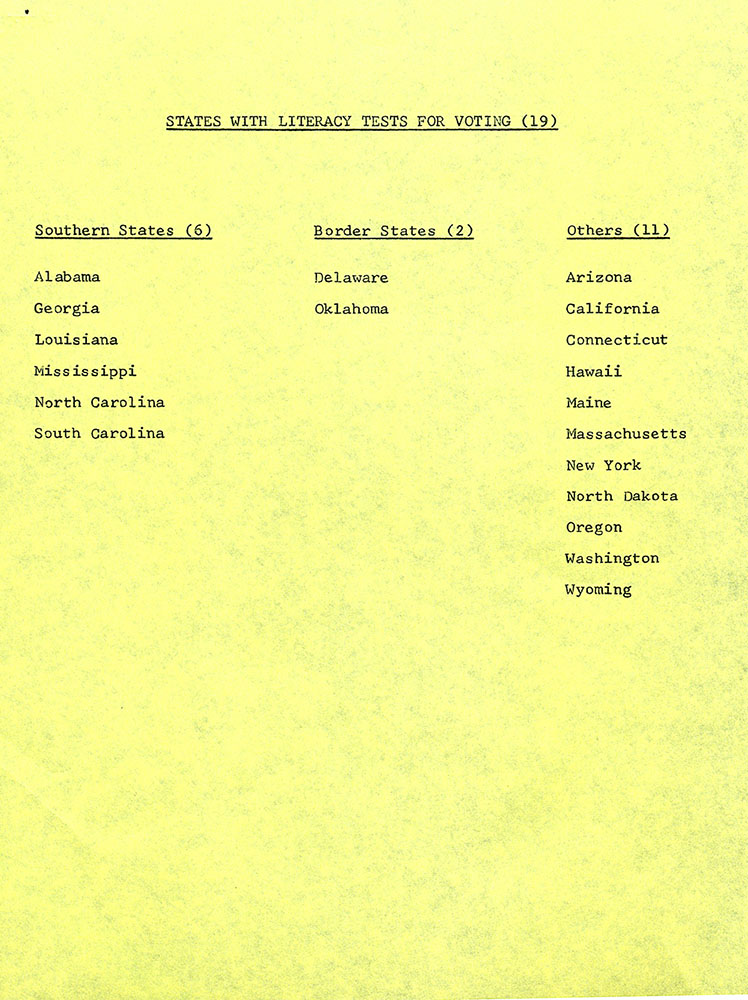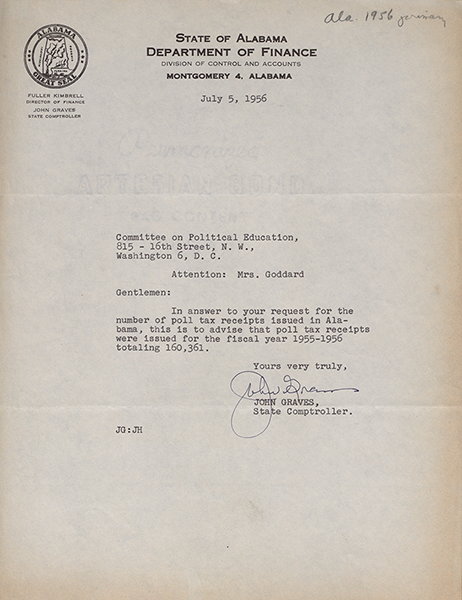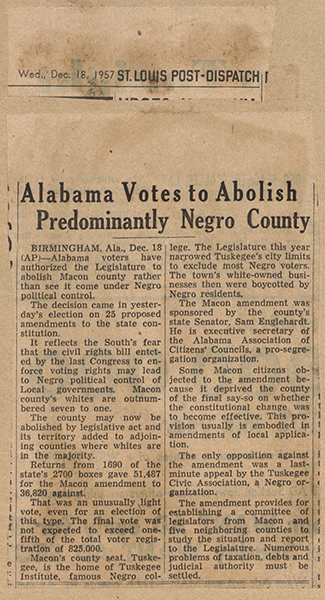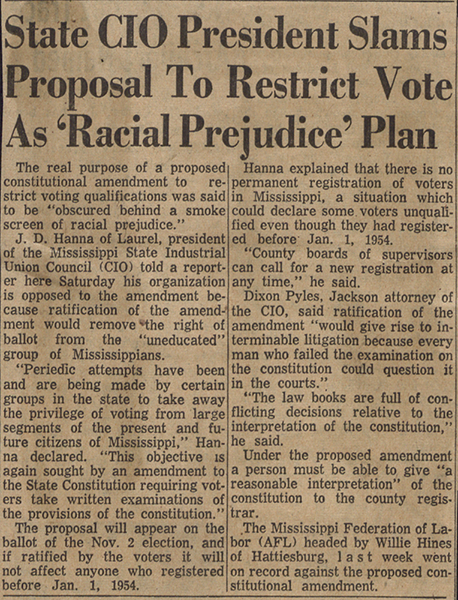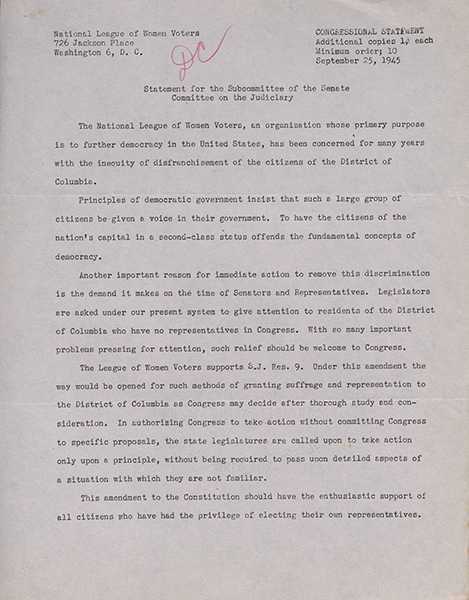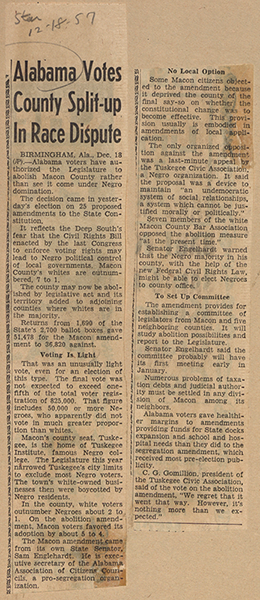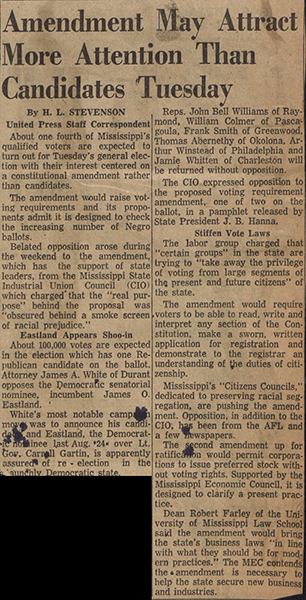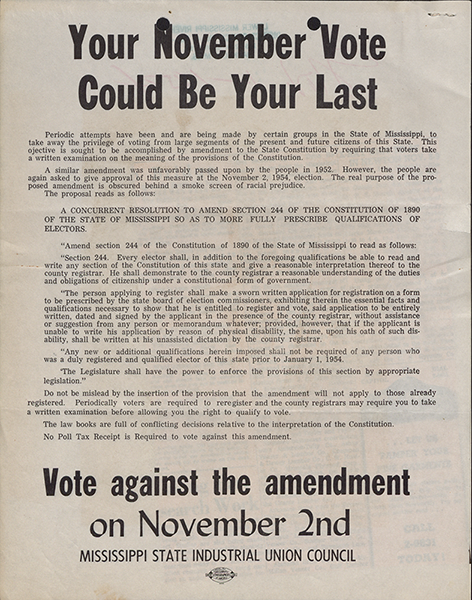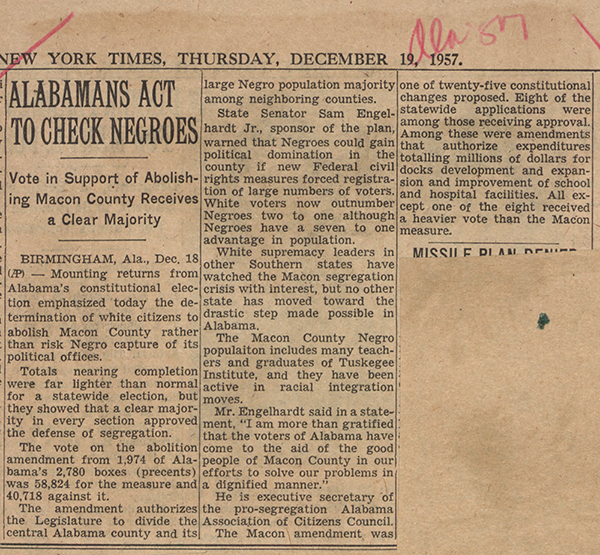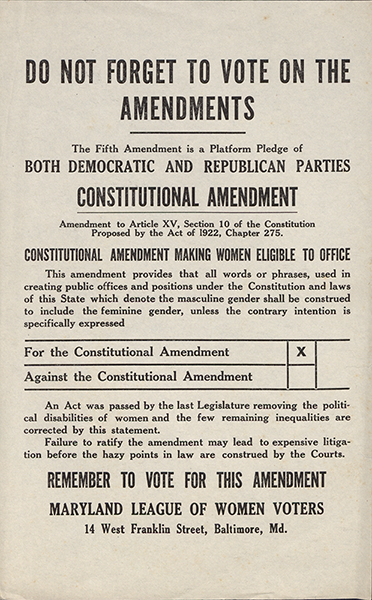Disenfranchising Voters
Despite progress to expand the electorate following the passage of the 15th and 19th amendments, deliberate efforts to restrict access to the ballot continued throughout the country, especially in the South. In response, a number of grassroots organizations formed in an attempt to re-enfranchise marginalized populations, particularly African Americans.
The constitutional amendments only protected voters of discrimination in federal elections, not in primary and local elections. Local election laws varied greatly across the nation as many states found ways to legally restrict voting access by enacting laws, commonly called Jim Crow laws, that created barriers for specific groups of people, without explicitly naming race as the discriminatory factor. Overt expressions of fear over election mismanagement, voter fraud, and voter manipulation were common justifications for why such discriminatory laws were needed. States unevenly enforced these rules, including poll taxes, literacy tests, and grandfather clauses, requiring people of color to meet the harsh standards and allowing white people greater leniency. African American voters and their allies also faced extreme violence and prejudice when they attempted to register or protest unfair practices.
Individuals and grassroots organizations attempted to combat these laws by registering new voters and encouraging participation in elections. Some groups brought civil suits against states for their discriminatory laws, demanding equal access to the polls and protections for all voters. This period is marked by extreme prejudice and a backward slide from progress that had been made with the passage of previous amendments protecting voter rights.
Explore archival material related to literacy tests, poll taxes, gerrymandering and other means of disenfranchisement.
WARNING
Offensive LanguageThe archival resources in this exhibition contain offensive and outdated language. We chose not to censor these items in order to accurately represent the bias and prejudice of the time. We strongly condemn the use of such language and ask exhibition visitors to engage with this material carefully and critically. Explicit warnings have been provided for those items with the most offensive language.
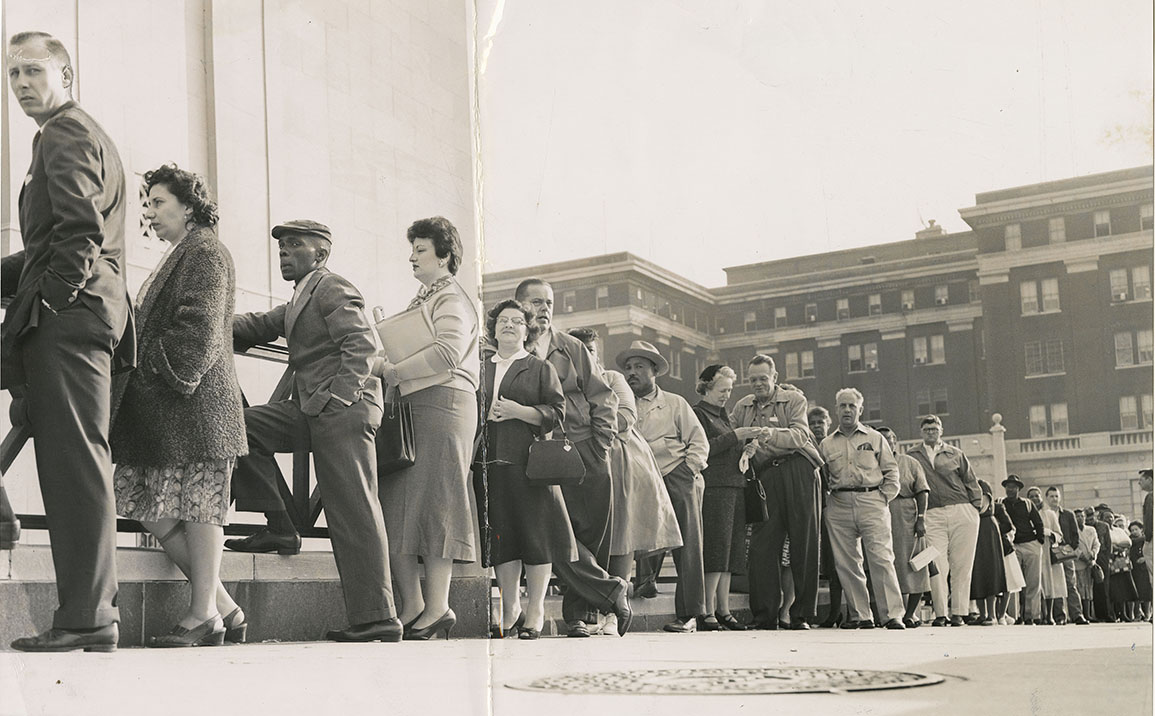
Photograph undated, Baltimore News American collection
Literacy Tests
Literacy tests were administered to voter registration applicants in many states. Proponents of literacy tests argued that they ensured literate and educated voters, which strengthened the integrity of elections. Those opposed to these tests noted that they were inconsistently administered, allowing some citizens to register to vote without taking literacy tests while others were denied the right to register to vote because of inconsequential errors or arbitrary assessment. These tests disproportionately affected the ability of racially and socio-economically marginalized communities to register to vote.
Sample Questions and Answers on Literacy Tests
Jefferson County, Alabama, 1950s.
AFL-CIO Civil Rights Department records
This is a set of questions and answers to a Jefferson County literacy test. This style of literacy test, which required potential voters to answer questions about civics and government, was popular in 1960s Alabama.
Elsewhere, literacy tests took other forms; for example, some tests asked voters to interpret a passage of the Constitution, while others presented more absurd challenges like “spell backwards, forwards,” or draw a difficult shape.
Sample Application for Registration
Jefferson County, Alabama, 1950s.
AFL-CIO Civil Rights Department records
Poll taxes
Poll taxes were one of the primary disenfranchising agents of Black Americans before the passage of the Voting Rights Act, along with literacy tests and intimidation. In order to ensure that poll taxes were indeed able to exclude voters based solely on race, many Southern states included a “grandfather clause” in their registration process that allowed voters to register as long as their grandfathers had the right to vote. This rule allowed poor whites to vote but excluded many Black voters, whose grandfathers may have been enslaved or otherwise legally barred from voting. Today, poll taxes exist in newer forms. For example, a 2019 Florida bill requires former felons to pay all fees and fines related to their sentence before they are allowed to vote in the state.
Gerrymandering
Redistricting is a process that often occurs after census data indicates a need to reallocate political representation based on population. Gerrymandering is a term used when sprawling, disconnected or oddly shaped districts are created in order to grant power to one political party over another. The term was first used in the early 1800s after Elbridge Gerry drew his district in such a way that favored one political party over another.
“Negroes Boycott Town To Fight Gerrymander Voiding Their Votes”
Wall Street Journal
Tuskegee, Alabama, 1957.
AFL-CIO Civil Rights Department records
This article describes an egregious attempt by political officials in Alabama to void Black votes by gerrymandering the district. The state legislature redrew Tuskegee city limits to divide the city in half and cut out 410 of the city’s 420 Black voters in an attempt to silence their voices.
The article quotes a Tuskegee city councilman as saying
“It’s a matter of self-preservation; Negroes were about to out-vote us and take over control of our city.”
Some state senators fought to abolish entire counties, including Macon county, to silence Black votes on a larger scale.
An Act on Redistricting
Oklahoma, 1951.
AFL-CIO Civil Rights Department records
Other means of disenfranchisement
These items contain additional information on the ways in which people from marginalized groups were subject to different rules and requirements that impacted their ability to register to vote and cast a ballot.
Articles about the Poe Amendment
Maryland, 1904-1905.
Warfield Family papers
These articles are part of a scrapbook labeled “Disenfranchisement” containing hundreds of articles, mostly about the proposed Poe Amendment of 1905. This amendment would introduce a “grandfather clause” and “understanding test” into the Maryland state constitution.
The grandfather clause stated that only those who had been eligible to vote in 1869, or whose fathers had been eligible to vote in 1869, were automatically eligible to vote. All others would need to complete an “understanding clause” which required applicants to explain portions of the Maryland constitution. Typically, these types of tests were judged in biased and inconsistent ways.
The amendment was advocated for using explicitly racist rhetoric, with the creators and proponents motivated to exclude African American men from the electorate. Ultimately, voters rejected the amendment, but only because it also disenfranchised many European immigrants.
LWV Statement on Washington, D.C. Suffrage
Washington, D.C., 1945.
League of Women Voters of Maryland records
In this statement, the League of Women Voters voices concerns about the disenfranchisement of D.C. citizens. They ask for expanded voting rights and representation in Congress for D.C. citizens and argue that the District of Columbia’s lack of such rights
“offends the fundamental concepts of democracy.”
Seventy-five years later, D.C. citizens are still unrepresented in the Senate and represented by a single delegate in the House. They earned the right to vote in Presidential elections in 1961 with the 23rd Amendment, which grants them Electoral College votes according to their population but does not allow the number of their electoral votes to exceed that of the smallest state.
Registration of Negro Voters Information Booklet
Alabama, 1954.
AFL-CIO Civil Rights Department records
“Registration as a Deterrent to Negro Voting”
Registration of Voters in Alabama
Alabama, 1957.
AFL-CIO Civil Rights Department records
List of Voting Places
Jefferson County, Alabama, 1950s.
AFL-CIO Civil Rights Department records

